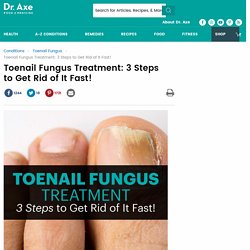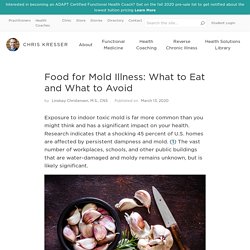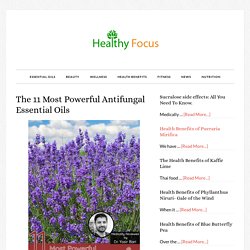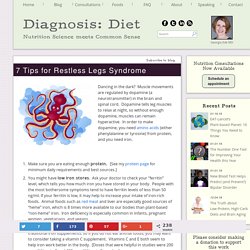

Diet and Atrial Fibrillation. Autoimmune Diets. Nutrition and Bone and Joint Health. Nutrition and Brain Health. Nutrition and Cancer Prevention and Support. Nutrition and CFS/ME. Nutrition, and Colds and Flu. Nutrition and Dental Health--Reverse Cavities and Oral Health. Metabolic Syndrome -- Diabetes and Heart Disease. Diet and Digestive Concerns. Nutrition and Sleep.
Nutrition and Thyroid, Adrenal and Hormone Support. Nutrition and Eye Health. Start Here for Glycation and AGEs. Glycation: Tackling an Underlying Driver of Chronic Disease. Where Do Most AGEs Come From? O Glycation, How Thy Name Hast Deceived Me! Toenail Fungus Treatment: 3 Steps to Get Rid of It Fast! Fungal infections that appear on the skin are one of the most common infections in humans.

Many people are curious about natural toenail fungus treatment, as this is an issue that many folks struggle with. Few are aware that toenail fungus symptoms can actually be a sign of candida virus or yeast within your system. Toenail fungus getting you down? See our natural treatment plan for it by clicking here. Almost there! Enter your email to download this free guide right now. We hate SPAM and promise to keep your email address safe. “Onychomycosis” or tinea unguium is the name for the type of infection that causes the fungi to appear on the nails. Food for Mold Illness: What to Eat and What to Avoid.
Have you undergone medical treatment for mold illness, but still struggle with chronic inflammation, digestive issues, or cognitive dysfunction?

If this sounds like you, it may be time to take a closer look at your nutrition, as the foods you eat can either help or hinder your recovery from mold illness. Read on to learn how optimal nutrition can aid in mold illness recovery by supporting detoxification, restoring gut health, and quenching inflammation caused by toxic mold exposure. Exposure to toxic mold is more common than you might think. The 11 Most Powerful Antifungal Essential Oils - Healthy Focus. Essential Oils Anti-fungal Properties Over recent times essential oils have become very well-known for their safe and natural healing qualities.

While their antiseptic and anti-inflammatory properties are widely known, their anti-fungal abilities are often overlooked. Many essential oils have been scientifically proven to contain anti-fungal properties which can help to fight off a number of common fungal complaints. We all have a certain amount of fungus and yeast in our bodies and by and large they cause no serious issues. They are typically kept in check by our body’s bacteria; however, problems may arise if certain conditions are present such as a weakened immune system. Common types of fungal infection include Athlete’s footJock itchRingwormOnychomycosis (a fungal infection which affects the nail and the nail bed)Yeast Infection–Candida Albicans (a fungus which infects the vagina, mouth, stomach or urinary tract) Note: Yeasts are a type of fungi–they are all part of the same kingdom.
How Essential Oils And Fragrances Cause Sensitization And Fragrance Intolerance — MyBioHack. There's a NAC to Treating COPD. Diet rich in apples and tomatoes may help repair lungs of ex-smokers, study suggests. The ultimate guide to understanding detoxification - Hack your gut. Your body is in a constant battle with the environment and other organisms that coexist in that environment.

Many people are familiar with the way the immune system deals with foreign microorganisms, but another equally important process is the removal of toxins. Detoxification is a $154 word but a process that few people fully understand. Wikipeida defines it as: “…the physiological or medicinal removal of toxic substances from a living organism…” Maybe it just seems that it has to be a simple process because the definition is simple. As with everything these days, there’s a firm dichotomy on what you should believe about detox. “You need to detox from this toxic world, turmeric is the best for that!” “The liver completely processes any toxin you get exposed to.” There’s a vast amount of evidence in the scientific literature on this topic, and for good reason.
7 Tips for Restless Legs Syndrome - Diagnosis:Diet. Dancing in the dark?

Muscle movements are regulated by dopamine (a neurotransmitter) in the brain and spinal cord. Dopamine tells leg muscles to relax at night, so without enough dopamine, muscles can remain hyperactive. In order to make dopamine, you need amino acids (either phenylalanine or tyrosine) from protein, and you need iron. Make sure you are eating enough protein. [See my protein page for minimum daily requirements and best sources.]You might have low iron stores. How about you? Basu PP et al. Gerrard JW et al. Gerrard JW and Richardson JS. Moccia M et al. Peirano P et al. Sagheb MM et al. Trotti LM et al. What's the Best Diet for Newly Sober Alcoholics and Addicts? 9 Signs of Protein Deficiency + Best Sources of Protein. [Below is my transcript of my video on why protein is important and how to overcome a protein deficiency, along with supplemental information on the topic.]

Today, I want to talk about the importance of protein. How protein benefits your overall health in physical performance is crucial to understand. So whether you’re a weekend warrior, you’re trying to lose weight fast or you are an athlete, protein is important for everybody — and just about everyone is deficient in quality protein in their diet. I’m going to go over how to get more protein in your diet, the benefits of eating more protein foods and how much you should consume.
So starting off here, let’s talk about protein and what it does. Click here to download more information on how to fix a protein deficiency. Almost there! Enter your email to download this free guide right now. Zinc and Autistic Spectrum Disorders. Source: Autistic spectrum disorders are complicated and most likely caused by a number of different problems.

However, we still don’t know definitively if something in the diet could influence autism. The following study can’t answer that question due to the design, but it does point out some interesting links: Infantile zinc deficiency: Association with autism spectrum disorders (link is external). In this study, nearly 2000 children with autistic disorders had hair tested for zinc deficiency. 584 (29.6%) subjects had levels lower than two standard deviations (link is external) below the mean of the reference range. 43.5% of the male children ages 0-3 and 52.5% of the female children 0-3 in the sample were zinc deficient. Older children with autism in the study had a lower incidence of zinc deficiency, which continued to decrease with the age of the subject sample, to the point where autistic children over the age of 10 had normal zinc levels.